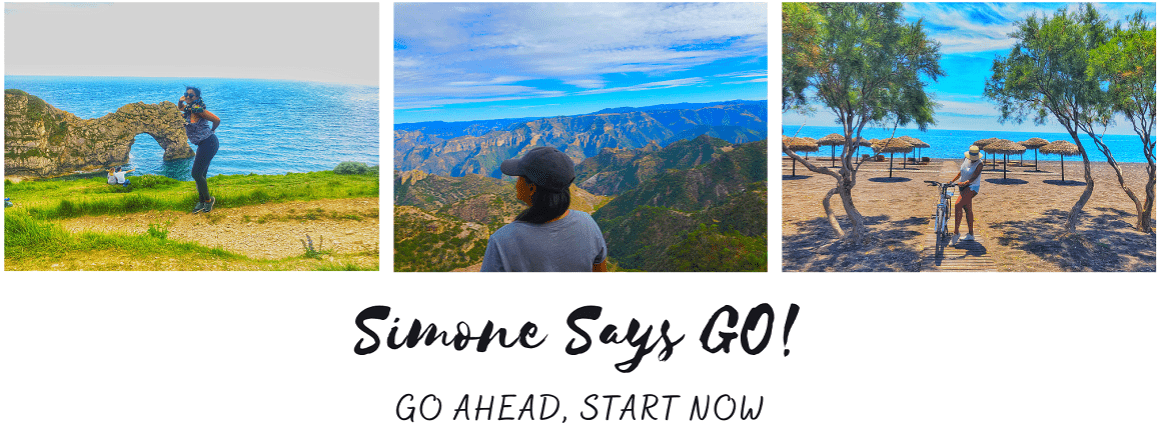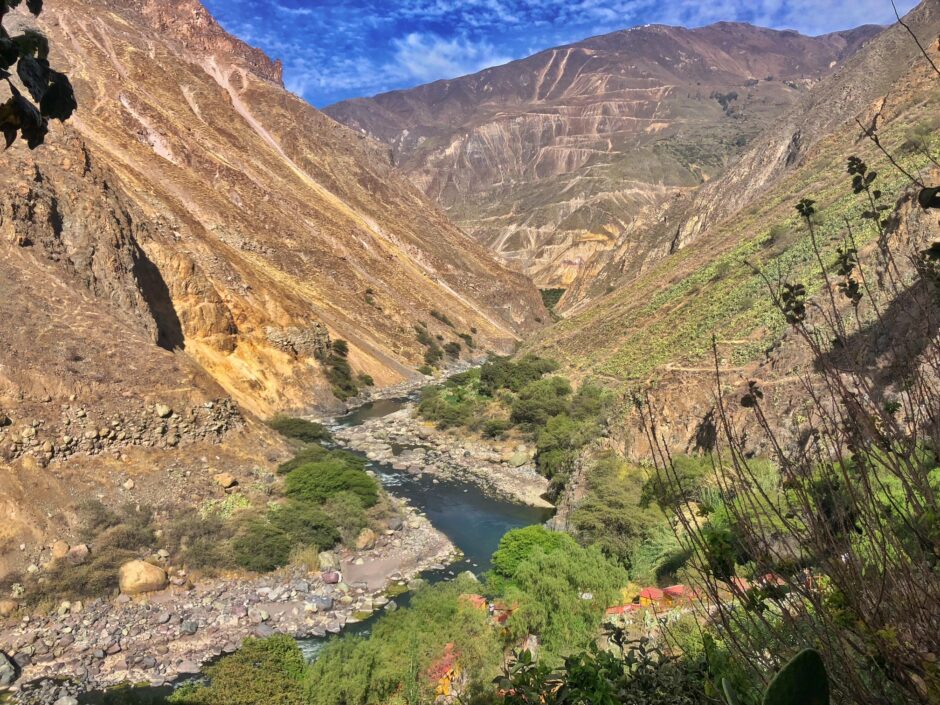Hiking the Colca Canyon is a must-do in Peru if you’re an adventure traveler. The views will take your breath away, as will the hike. I haven’t seen a single trip report from anyone who hasn’t simultaneously mentioned how beautiful it was and how much it kicked their butt.
Colca Canyon Highlight: Andean Condors
The most special part of this hike is who you’ll share the canyon with… Colca Canyon is the flight path for Andean condors, one of the world’s largest flying birds. Spotting them isn’t easy but show some patience and they will appear. And when they do, there is nothing more thrilling than watching this magnificent bird soar. Andean condors have the largest wing span of any bird in the world and their effortless movement in the air is genuinely mesmerizing.
Hopefully, I’m convincing you here… I loved this Colca hiking experience. That said, the Colca Canyon trip was the stop in my Peru trip itinerary that required quite a bit of planning (besides visiting Machu Picchu). Ultimately I opted to hike from the town of Cabanaconde to Llahuar which is the “west route”.
Let me share everything I learnt from this experience and hopefully it gives you everything you need to know before you go hiking in the beautiful Colca Canyon.
What is the altitude in Colca Canyon?
Cabanaconde: 3,300m above sea level
Sangalle: 2,100m above sea level
Standing at the top of the canyon you are 3,300m above sea level.
At the bottom of the canyon it is 2,100m above sea level, meaning hikers gain over 1000m in altitude on the return ascent.
How difficult is the Colca Canyon hike?
The Colca Canyon trek is challenging no matter what route you choose. You don’t need to be an advanced hiker to go on this trek (I certainly am not) but moderate fitness is required.
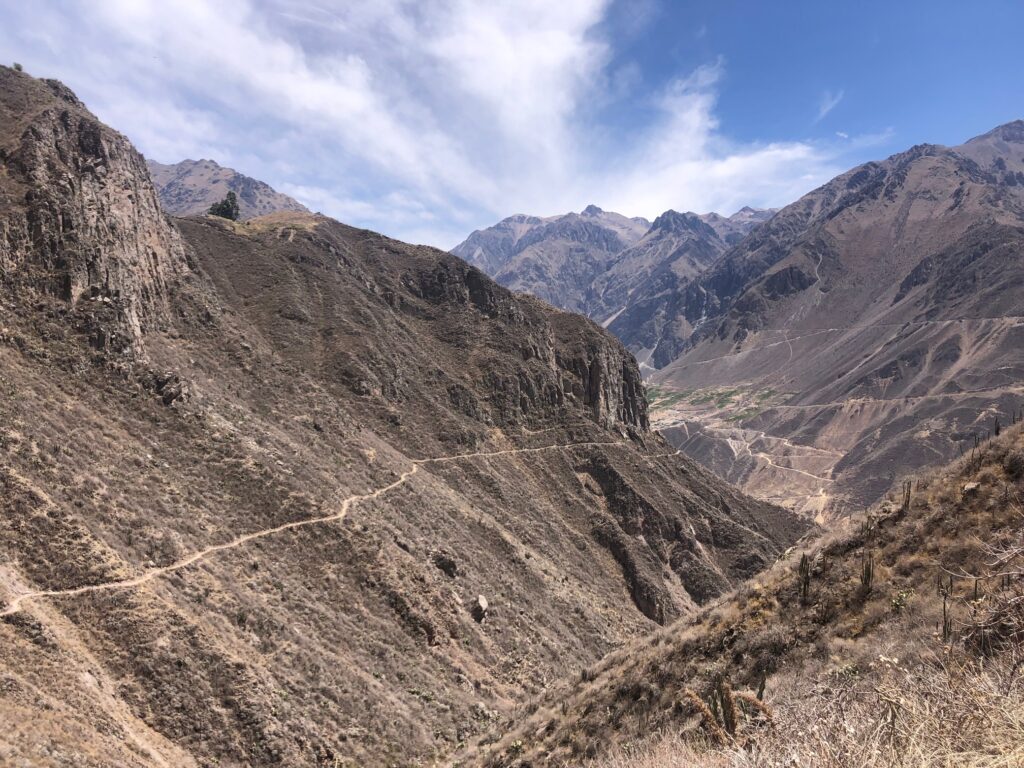
When I was in Arequipa, I noticed that several of the tour company descriptions glamourize most aspects of the canyon adventure. Make no mistake – this will be a great physical challenge.
On the first day, the most challenging aspect of the canyon trek will be the constant downhill. The descent is tough on the knees. I was so grateful to have walking poles.
And what goes down must come back up! The final day of ascent from Sangalle will be the toughest (but also shortest) day.
As with most hiking in Peru, it’s not all about conquering the terrain but also your body adapting to the conditions. What many may find hardest is not the Colca Canyon trail itself but walking for hours through dry desert conditions, in high altitude, under intense sun.
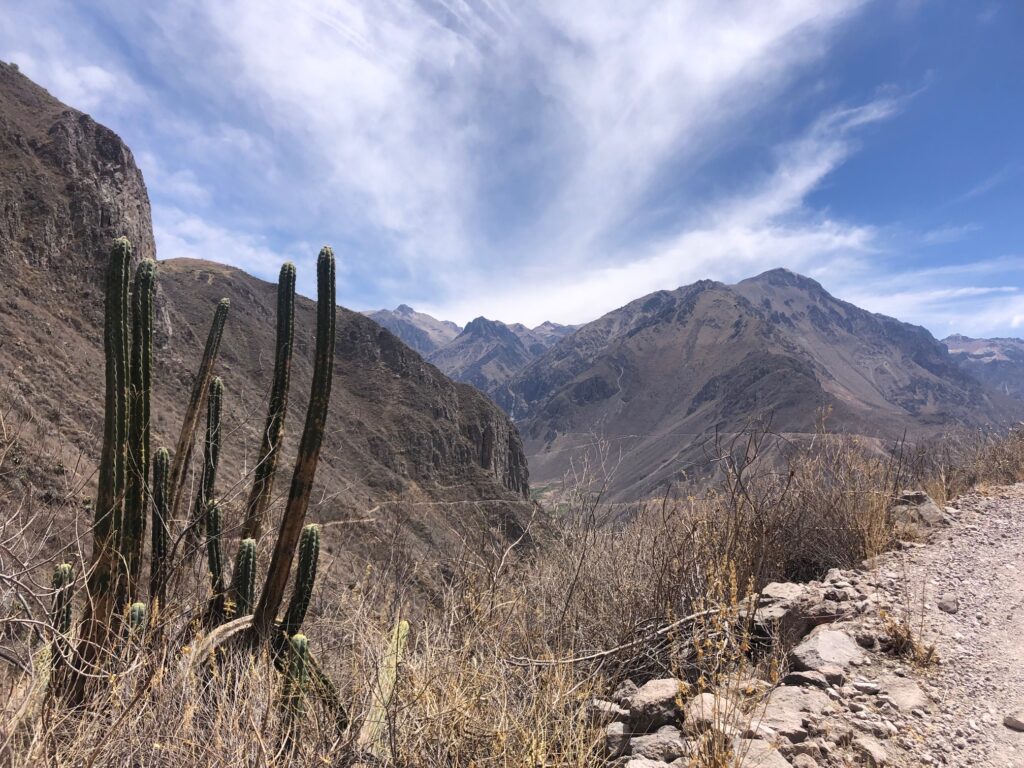
Do you need a guide to hike Colca Canyon?
I went hiking in the Colca Canyon without a guide. The self-guided trek was relatively straightforward as the point-to-point route is fairly obvious, plus there are a couple rudimentary signs along the way to keep you on the right track. (Although I did witness a really scary moment in the canyon from a group of 4 hikers who somehow ended up off route…)
However, getting a guide is such a personal choice. I imagine an experienced Colca Canyon guide will have captivating insights to share on the long history of the area and its indigenous settlements, explanations of Peruvian farming practices, types of flora found, etc. So it really comes down to your preference!
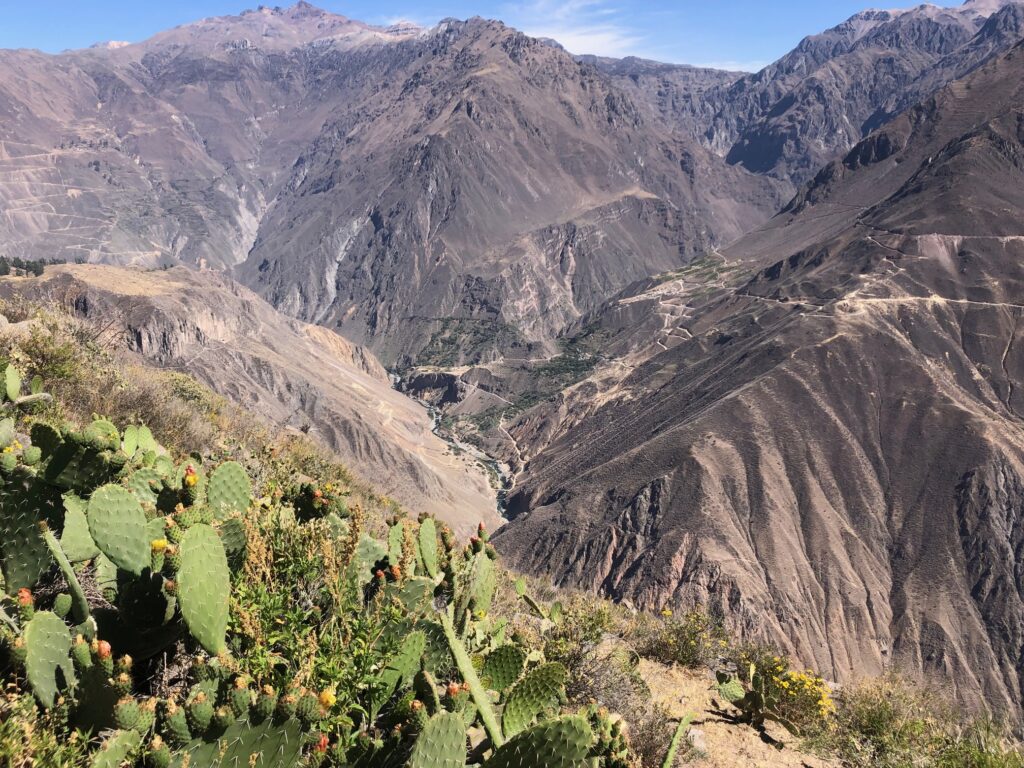
What is the best time to go on the Colca Canyon hike?
The best time to visit Colca Canyon is in April or May. This marks the end of the rainy season in Peru which runs from November to April.
I hiked Colca Canyon in late October which was also a good time to visit. One thing to be mindful of is that the morning heat in the canyon was shocking. Imagine how intense it must get in dry season months like June and July!
Itinerary for hiking Colca Canyon (without a guide)-Cabanaconde to Llahuar
Colca Canyon Trek Itinerary : Cabanaconde > Llahuar > Cabanaconde (4 days, 3 nights)
Day 1: depart Arequipa early. Arrive in Cabanaconde. Overnight stay in Cabanaconde.
Day 2: early trek from Cabanaconde to Llahuar. Overnight in Llahuar
Day 3: trek to Sangelle | Alternative option: Relax and overnight again in Llahuar
Day 4: early trek from Sangelle to Cabanaconde | Alternative option: take private transport back to Cabanaconde (can be pre-arranged at hostel before starting your hike)
For my return leg, I passed on the not-so-thrilling prospect of walking from Llahuar to Sangalle to climb out of the canyon. Instead, I arranged private transport from Llahuar back to Cabanaconde through Pachamama hostel. Most people do hike in and back out though.
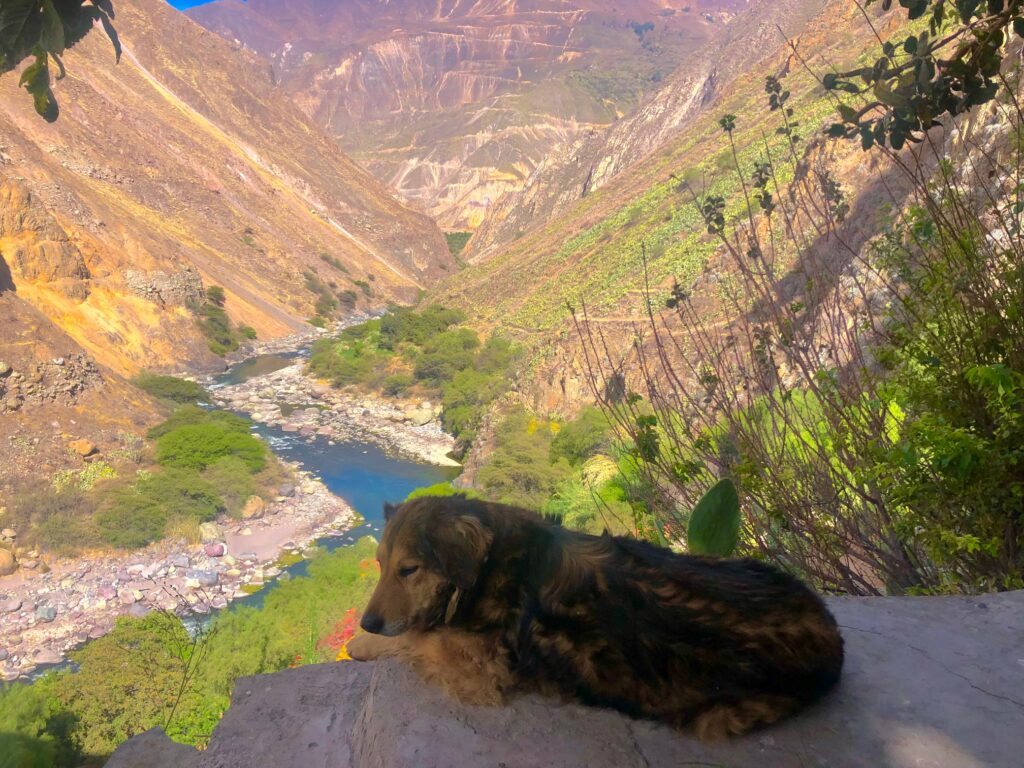
Note the common theme of early morning departures. It’s mainly due to the punishing heat in the daytime – if you can reduce your sun exposure by an hour or 2 in the morning, do it.
Also, on the day that you return to Cabanaconde, keep in mind that there are limited bus options (if you’re arranging your own transport). Best to move early every day in the Colca Canyon!
Hiking in Colca Canyon: Where to stay
Here are my recommendations on where to stay in the Colca Canyon for the Llahuar trek.
Where to stay in Cabanaconde
If your itinerary allows, you should stay overnight in Cabanaconde before hiking in the morning in order to assimilate to the altitude. (Be aware that guided tour groups from Arequipa typically arrive and start hiking into the canyon immediately.)
Pachamama Cabanaconde
We stayed at Pachamama Cabanaconde hostel and were happy with the choice.
For anyone going on the Colca Canyon hike without a guide, Pachamama is a great place to assimilate and get guidance from the highly knowledgeable hostel team here before leaving early in the morning. It’s also a great option for solo travelers; connection with fellow hikers is easily forged here.
On the evening of our arrival, dinner was a delicious pizza baked in their wood-fired oven. Immediately after dinner, a briefing session was held. Leandro from Pachamama led a comprehensive walkthrough of do’s and don’t on the trail – really practical advice which served me really well on the walk down Colca Canyon the following day.
Where to stay in Llahuar
There are 2 accommodation options for visitors to Llahuar: Casa de Virginia or Llahuar Lodge.
Llahuar Lodge is the more popular option among hikers. The two main reasons for this are the thermal pools by the adjacent river, and the social atmosphere. I’d recommend Llahuar Lodge for anyone looking for fun vibes after their hike.
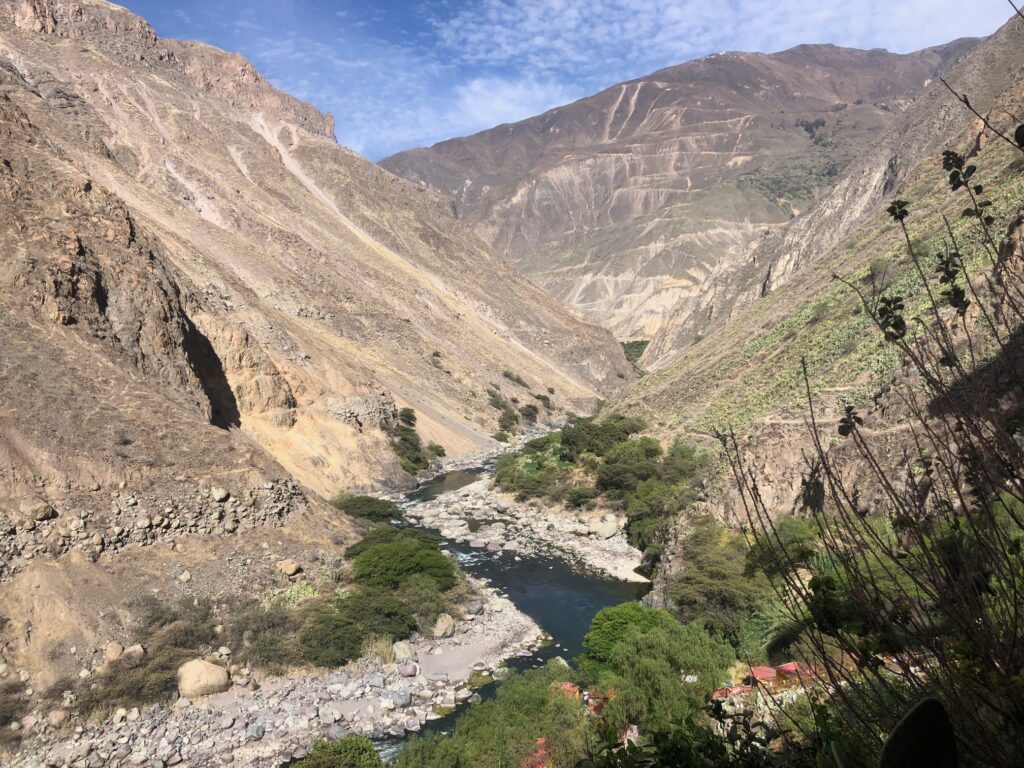
Casa de Virginia is a great retreat for couples or any any hikers seeking a nice, quiet stay. I stayed here and loved its beautiful gardens and the overall serenity here. Pura vida.
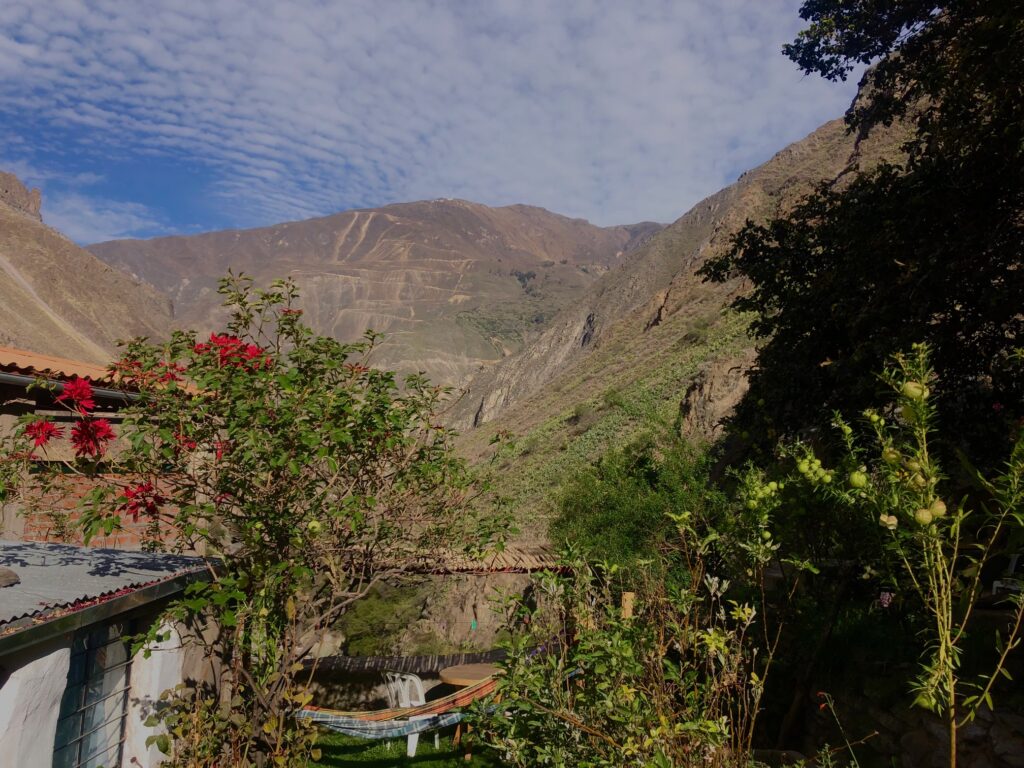
How to go from Cabanaconde to Llahuar (without a guide) | step-by-step instructions
Colca Canyon Hike Report
Distance: 6.5 Miles / 10.5km
Month of hike: October
Starting Time: 8:30am
Finishing Time: 2pm
Features: Gravel paths, steep downhill, high sun exposure
Trail Highlight: Achachiwa Lookout Point (for condor sightings)
Starting at the main square in Cabanaconde (“Plaza de Armas”), head west and follow Bolivar Street until you reach an old bull ring. Once you walk around the bull-ring to the right you’ll notice a sign that marks the start of the path towards Llahuar.
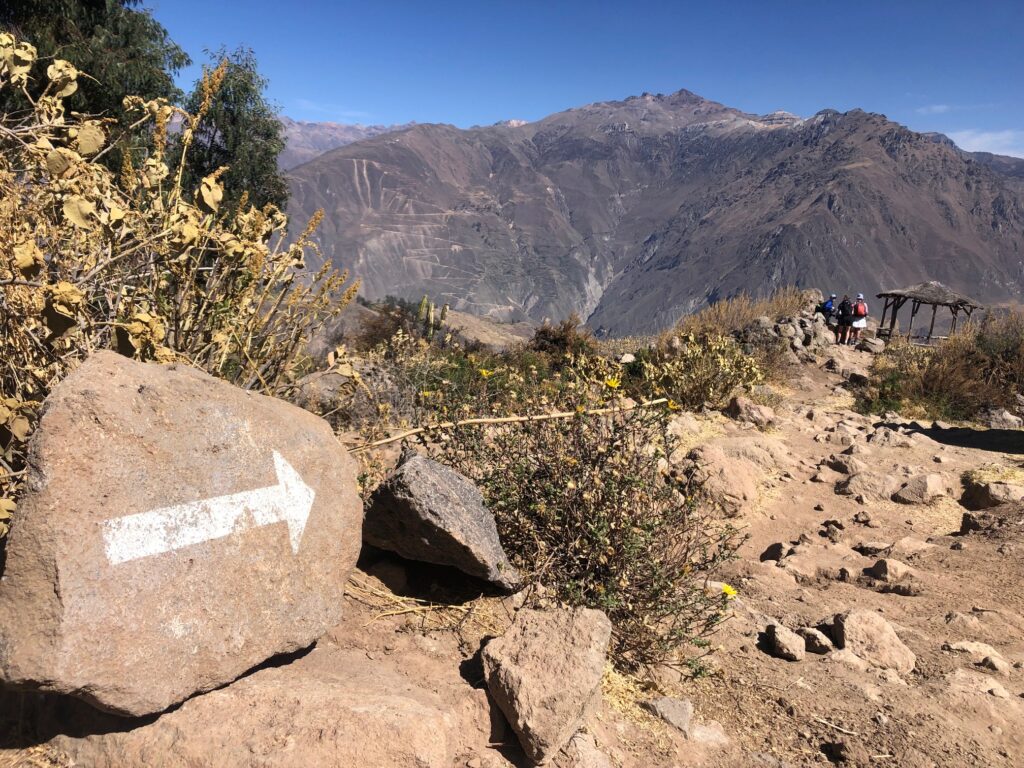
After walking a short distance, you arrive at a wooden shelter which is the Achachiwa Lookout Point (or “Mirador Achachiua”). The walk from the main square in Cabancode to the Achachiwa viewing point takes about 15 – 20 minutes.
A park attendant may be stationed here. This is where I paid for the mandatory Autocolca tourist ticket (or ‘boleto turistico’) for visitor entry to Colca Canyon.
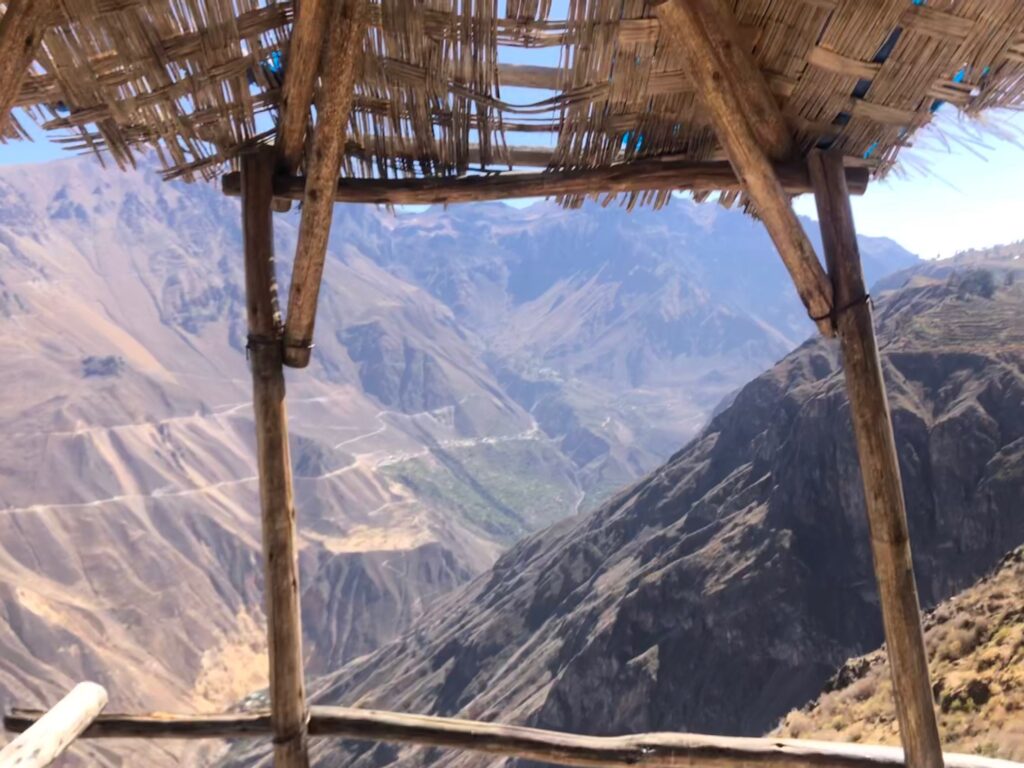
The next section consists of switchbacks which go on until you reach a small wooden bridge. The trail levels out for a brief stretch. I’d estimate that this is around the halfway point of the journey down, and it is certainly the nicest.
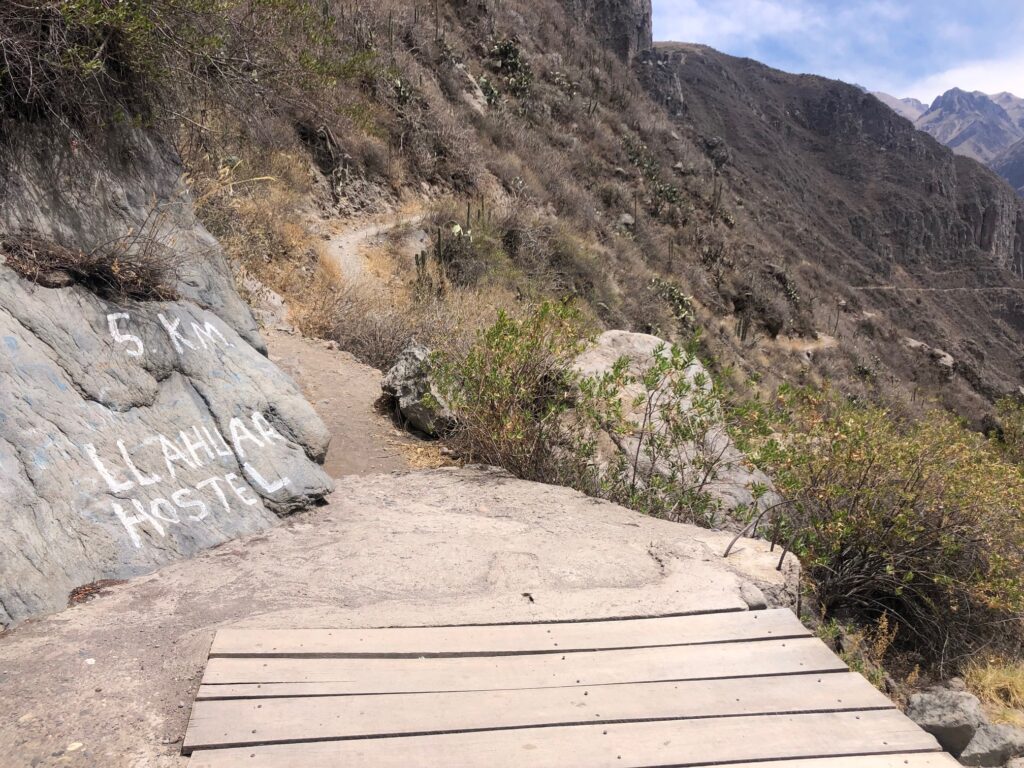
A couple of condors glided by while I was in this section of the Colca Canyon path down to Llahuar which was pretty special. Also nice is the fairly flat terrain here. It gave my knees temporary relief before the next stage of descent started.
The trail then zig-zags downwards to the Colca River, or Rio Colca. It is a really rocky path where you need to watch your step as there are loads of loose stone. Because it is steep and goes on for a long time, this section is very punishing on the knees. But it could have been way worse if we didn’t have trekking poles. Thank goodness for the guys at Pachamama Cabanaconde for strongly urging everyone to take them!
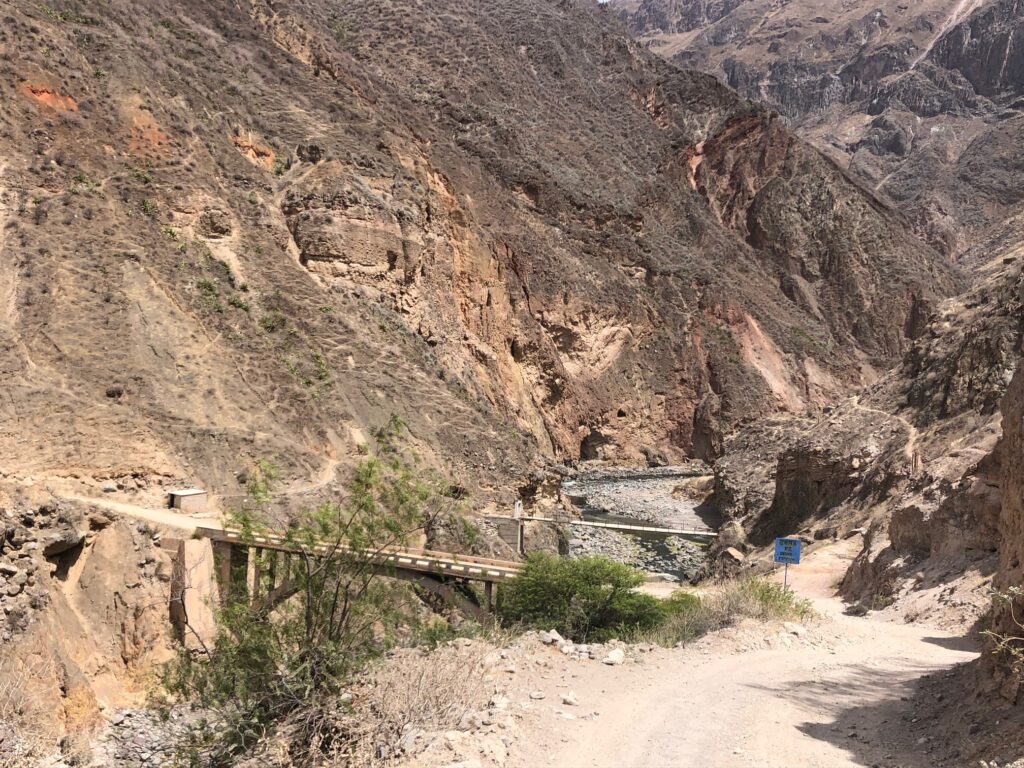
Finally, at the bottom you cross the new bridge and join the road where you will walk past a bus stop and continue until you reach the next bus stop where the turnoff to the village will be.
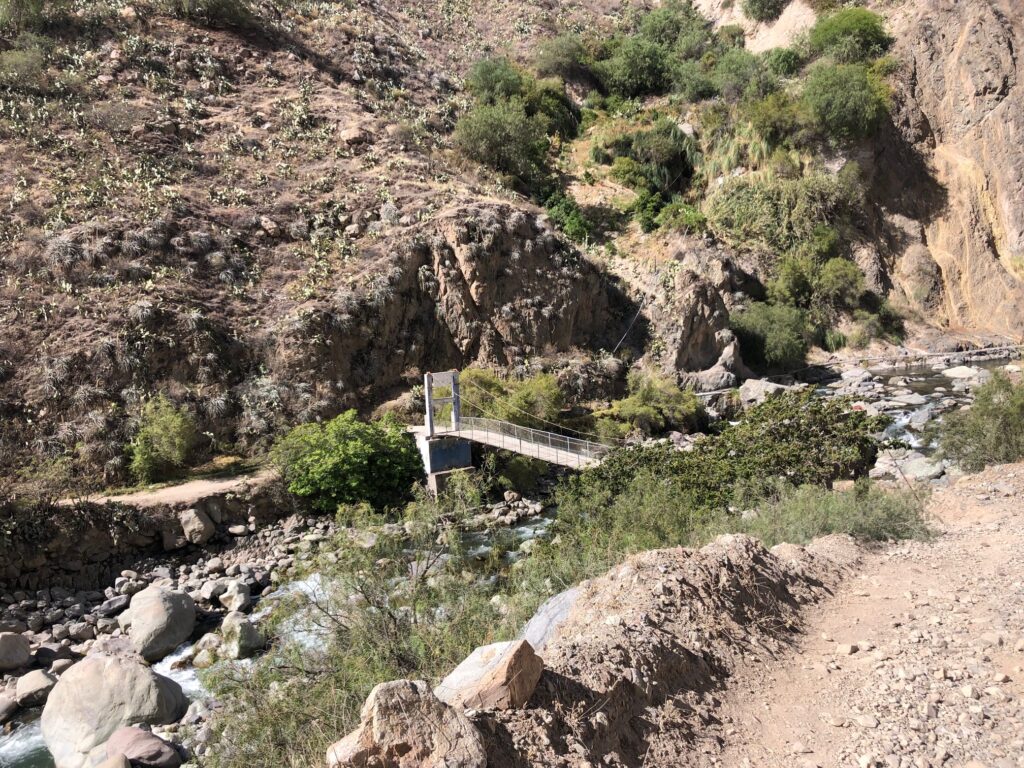
I arrived exhausted to the core and practically dizzy with amazement…I’d done it!
How to return to Arequipa from Cabanaconde
Buses typically leave from Cabanaconde to Arequipa at 6:30am, 9:30am, and 1:30pm. Final destination: Terminal Terrestre de Arequipa.
You can also take a colectivo to Chivay and from there connect to another colectivo to Arequipa. I caught a 10:30am colectivo easily in the main square. Like all colectivos, times are not fixed – it leaves when it fills up.
Travel Tip: if your schedule permits, make a stop at La Calera Thermal Baths (or ‘Baños Termales La Calera’) before returning to Arequipa. From Chivay, it is easy to grab a local mototaxi to get there and back – it’s only 3.5km away.
What better way to end your Colca Canyon adventure than with a soak in the nearby mineral springs?
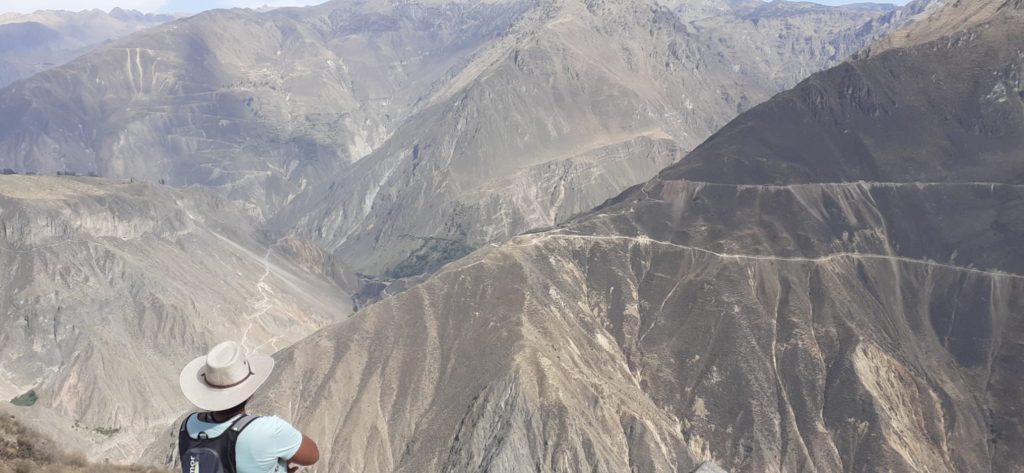
Discover more from Simone Says GO!
Subscribe to get the latest posts sent to your email.
